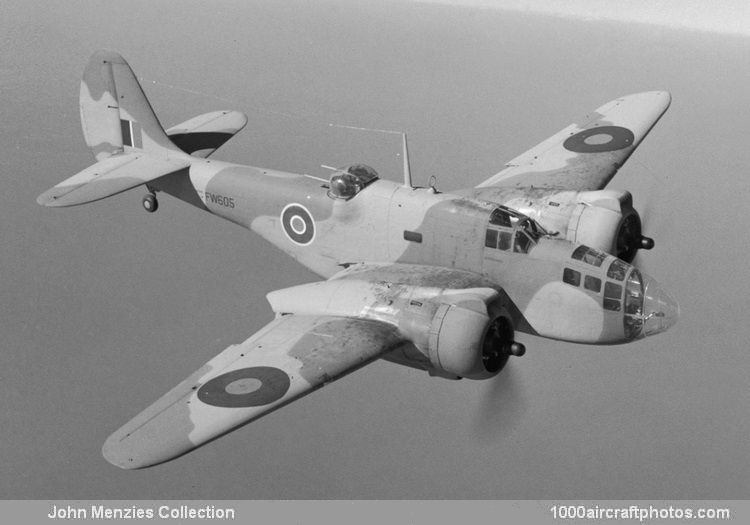11/15/2014. Remarks by Johan Visschedijk: "Whereas the earlier Maryland had been taken over from French contracts, the Baltimore was built from the outset to British requirements. As a development of the Maryland, the Baltimore differed in being powered by the more powerful 1,660 hp Wright Double-Row Cyclone GR-2660-A5B engine, improving the performance, and in having a deepened fuselage which allowed direct communication between members of the crew (in the Maryland, crew members had been separated by transverse bulkheads).
The first Baltimore flew on June 14, 1941. Designated Baltimore Mk.I, the prototype, serialed AG685, reached Britain in October that year and was taken through trial installation stages at Burtonwood, near Liverpool. The first 50 Baltimores delivered were Mk.Is (s/n AG685 to AG734), followed by 100 Mk.IIs (s/n AG735 to AG834), neither of which had a power-operated dorsal turret. The Mk.I had a single hand-operated Vickers K gun in the mid-upper position, and the Mk.II a twin-Vickers installation. On the Baltimore Mk.III (250 built, s/n AG835 to AG999 and AH100 to AH184), a hydraulically-operated four-gun Boulton Paul dorsal turret was introduced.
Subsequent aircraft, built under Lend-Lease contracts and ordered by the USAAF under the designation A-30 and USAAF serials, had an electrically-operated Martin turret: the Baltimore Mk.IIIA (281 built, USAAF s/n 41-27682 to 41-27962, RAF s/n FA100 to FA380), the Mk.IV (294 built, USAAF s/n 41-27963 to 41-28256, RAF s/n FA381 to FA674) and the Mk.V (600 built, USAAF s/n 43-8438 to 43-9037,RAF s/n FW281 to FW880). Baltimore deliveries to the RAF ended in May 1944, with a total of 1,575 built.
The Baltimore was used exclusively for operations in the Mediterranean theatre by squadrons of several air forces, including the RAF, RAAF and SAAF, some of the first entering service with RAF No. 223 Squadron at Tmimi, Libya, in January 1942. Operating both by day and night, Baltimores did sterling work with the light bomber squadrons of the Desert Air Force during the North African offensive following the Battle of Alamein, and later played a prominent part in the intensive bombing of Pantelleria and targets in Sicily. After the Allied invasion of Italy, the Baltimores continued to bomb targets ahead of the advancing armies and with some squadrons remained in action until the end of the war in Europe.
One Baltimore, a Mk.III, s/n FA163, became a veteran of 102 operational sorties over Tunisia, Sicily and Italy - probably a record for a Desert Air Force light bomber.
In addition to its role as a tactical support bomber, the Baltimore also undertook anti-shipping reconnaissance, notably with No 459 Squadron in the Eastern Mediterranean and with No 52 Squadron at Gibraltar. Like the Maryland, it did useful work as a photo-reconnaissance aircraft both with No 69 Squadron in Malta and No 680 Squadron in Tunisia. A few Baltimores lingered on in RAF service immediately after the war with No 249 Squadron (renumbered from No. 500 Squadron), which flew them in Kenya from Eastleigh before rearming with Mosquitos in March 1946.
The pictured aircraft was allotted to RAAF No. 454 Squadron in July 1944 and was operated from Pescara, Italy. The squadron was disbanded on August 14, 1945, the aircraft was struck off charge on March 14, 1946."
